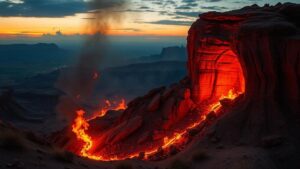The balance of folklore and fact in jungle exploration narratives.
The Balance of Folklore and Fact in Jungle Exploration Narratives
Jungle exploration has captivated human imagination for centuries, drawing adventurers and researchers to explore the dense wilderness of the tropics. From the thick canopies of the Amazon rainforest to the mystical paths of Southeast Asian jungles, these regions have been the backdrop for numerous exploration narratives that blend folklore with factual accounts. Understanding this balance helps us appreciate not only the beauty of these environments but also the cultural contexts that define them.
The Historical Context of Jungle Exploration
The history of jungle exploration can be traced back to the late 19th and early 20th centuries when European powers sought to expand their empires, often resulting in extensive expeditions into uncharted territories. Notable figures such as Henry Morton Stanley, who famously searched for David Livingstone in the African jungles, and Theodore Roosevelt, whose 1914 expedition down the River of Doubt in Brazil, exemplify this era of exploration.
These journeys frequently encountered indigenous tribes and diverse ecosystems, creating a rich tapestry of narratives interspersed with local legends. For example, Stanleys reports included mentions of myths concerning the Mokele-Mbembe, a dinosaur-like creature said to inhabit the Congo River basin, which serves as a prime example of folklore intertwined with exploration.
The Role of Folklore in Exploration Narratives
Folklore often serves as a narrative device that adds depth to the exploration tales. It reflects the perspectives of indigenous peoples and their profound connections to the land. Many explorers documented these local stories, presenting them as curiosities or obstacles to their quests. As a result, folklore helps immerse readers in these environments, providing insight into the cultural heritage of the regions being explored.
- The legend of El Dorado, a fabled city of gold in the Amazon, lured explorers like Francisco de Orellana in the 1540s.
- The tales of the Headless Corpse in the jungles of Guatemala, which some explorers claimed to have encountered.
These myths often fueled further exploration, illustrating how human desire for adventure and discovery can warp narratives into something larger than life. They also raise questions about credibility and the integrity of firsthand accounts in the face of enticing folkloric tales.
Fact vs. Fiction: The Impact of the Scientific Revolution
As the scientific revolution advanced throughout the 17th and 18th centuries, the importance of empirical evidence and observation reshaped exploration narratives. This shift compelled explorers to distinguish between their empirical observations and the myths presented to them. Explorers like Wallace, who explored the Amazon in the 19th century and laid foundational work for evolutionary biology, began documenting species discoveries while critiquing the local legends that often surrounded them.
Despite this trend, the tension between folklore and fact remains. Modern explorations often find instances where local lore holds kernels of truth. For example, the shrimp known as the vampire shrimp was thought by local tribes to be a mythical guardian, showcasing how cultural narratives can provide guidance in understanding biodiversity.
Real-World Applications in Contemporary Exploration
Today, researchers increasingly recognize the substantial value of integrating indigenous knowledge with scientific exploration. Environmental scientists, anthropologists, and conservationists often collaborate with indigenous communities to understand the ecological significance of traditional narratives, particularly regarding conservation efforts.
- In the Amazon, collaborative projects such as the Guardians of the Forest initiative emphasize protecting biodiversity through indigenous folklore that governs resource use.
- The Fijian mythology concerning the seas guardians is employed by local ecologists to promote sustainable fishing practices.
This marriage of folklore and fact in present-day exploration can lead to richer, more culturally sensitive narratives that acknowledge community-driven stewardship of natural resources. Also, it fosters a deeper appreciation for the interconnectivity of human culture and the environment.
Conclusion: Navigating the Dichotomy
The exploration of jungles around the world continues to reflect a dynamic interplay between folklore and empirical fact. As we contemplate the narratives generated by past explorers, it is imperative to recognize the historical and cultural contexts that inform these accounts. Understanding the balance between the enchanting stories of indigenous cultures and the scientific rigor of exploration allows us to appreciate the complexity of the natural world and guides future endeavors in an ethical and informed manner.
Moving forward, it is crucial for modern explorers and scientists to engage with local communities, incorporating their rich cultural heritage into ongoing narratives. This collaboration not only preserves folklore but also enriches the factual understanding of our planets diverse ecosystems. By acknowledging this balance, we contribute to a more holistic and sustainable approach to exploration.



